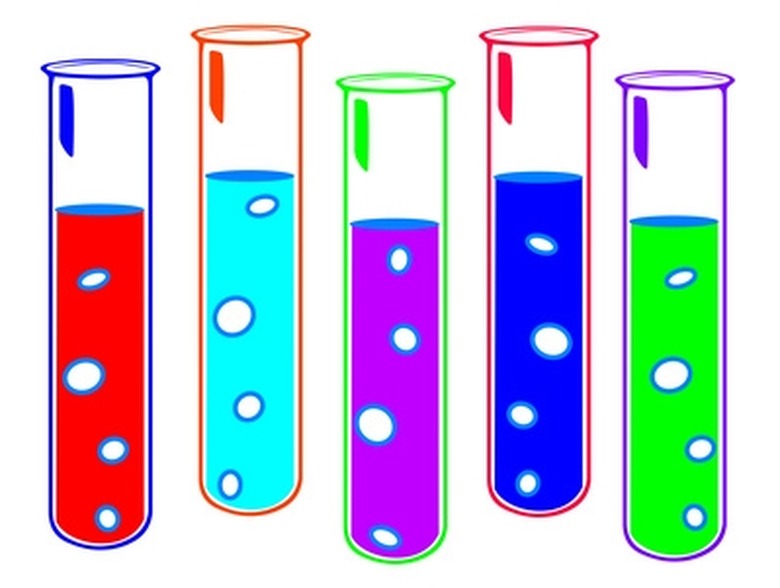How To Make Dilutions
Learning how to perform a dilution correctly in chemistry or microbiology class will improve your laboratory techniques and ensure results that are more accurate. These science classes require different dilution techniques and not everyone knows a difference exists. Use these dilution methods during your next laboratory experiment and watch your yields or counts improve.
Step 1
Use volumetric glassware when doing dilutions for chemistry or analytical methods. Serological pipettes and graduated cylinders are fine for microbiology dilutions used to reduce micro levels to a countable number.
Step 2
Begin with a liquid stock solution. This may be a straight liquid sample or a solution made from a powder or liquid, diluted to a known volume.
Step 3
Make a chemistry or analytical dilution by taking a volumetric amount of a solution, using a volumetric pipette, into a volumetric flask of the desired final volume. For example, a 1 to 100 dilution in chemistry requires the use of a 1.0 mL volumetric pipette and a 100 mL volumetric flask. The final volume of the dilution will be 100 mL (1 mL of stock solution plus 99 mL of diluent, the solution used for diluting).
Step 4
Perform a microbiology dilution by taking a serological pipette and measuring a volume of the stock solution into a beaker. Then add the diluent using a graduated cylinder and mix in the beaker. A 1 to 100 dilution in microbiology requires the addition of 1 mL of stock solution to 100 mL of diluent for a final volume of 101 mL.
Step 5
Use the proper diluent identified in the method for the dilution. Liquids such as media, buffer and water are common microbiology diluents. Chemistry methods will specify diluents like solvents, acids, bases and water.
Step 6
Swirl the flask halfway through the dilution to mix. Then continue to add the remaining solution.
Step 7
Use a dropper for adding the final amounts of diluent in small drops for an accurate final volume measurement.
Step 8
Read the final volume by looking at the meniscus. View the meniscus by holding up the flask or beaker to eye level. The shape seen at the top of the liquid level that looks like a smile or upside-down umbrella is the meniscus. The bottom, not the sides that stretch up the sides of the glass, of the meniscus in the center should line up with the line drawn on the flask for an accurate measurement.
Step 9
Add a magnetic stir bar to the final dilution and place on a stir plate to mix. Alternatively, stopper the flask and swirl, then hold the stopper on with the thumb and flip the flask upside down and back several times to mix.
Step 10
Perform a serial dilution, which are a series of dilutions, when the final volume is a large value like 10,000 mL, for example. In this case, make a 1 mL to 100 mL dilution first and from that solution take another 1 mL into another 100 mL. The final solution is a 1 to 10,000 mL (100 mL x 100 mL) dilution.
Step 11
Perform acid dilutions differently by adding a little water in the flask before adding the smaller volume of acid. Dilute to volume as normally required.
Things Needed
- Volumetric pipette and flask with stopper
- Serological pipette
- Graduated cylinder
- Beaker
- Pipette bulb
- Dropper
- Magnetic stir bar and plate
TL;DR (Too Long; Didn't Read)
Label dilutions properly for easy identification Do no replace liquid lost during mixing. This additional volume of liquid reduces the accuracy of the dilution.
Warning
Always add acid to water. Adding water to acid results in violent reactions and can cause serious injury. Use a pipette bulb and stay away from the older practice of mouth pipetting.
Cite This Article
MLA
Contributor, . "How To Make Dilutions" sciencing.com, https://www.sciencing.com/make-dilutions-4449673/. 24 April 2017.
APA
Contributor, . (2017, April 24). How To Make Dilutions. sciencing.com. Retrieved from https://www.sciencing.com/make-dilutions-4449673/
Chicago
Contributor, . How To Make Dilutions last modified August 30, 2022. https://www.sciencing.com/make-dilutions-4449673/
